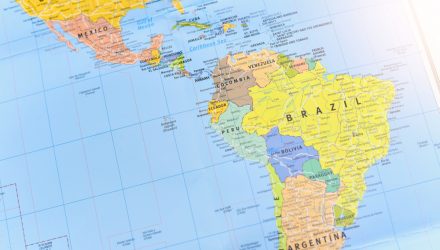More money is flowing into Latin America since the rise of COVID-19, with foreign direct investment in Latin America having rebounded from the pandemic-induced slump. According to United Nations Conference on Trade and Development’s World Investment Report 2022, FDI flows to the region grew to $134 billion in 2021, up 56% from the year prior. This is after flows plunged by 45% in 2020, the sharpest decline recorded in developing regions that year.
In particular, fintech investment within Latin America has seen significantly accelerate growth since the start of the pandemic. Per the nonprofit organization the Association for Private Capital Investment in Latin America (LAVCA), the region saw the amount of venture capital nearly quadruple over a year, to $15.7 billion in 2021 from $4.1 billion in 2020.
And according to the third edition of the study Fintech in Latin America and the Caribbean: A Consolidated Ecosystem for Recovery, published by the Inter-American Development Bank, IDB Invest, and Finnovista, the number of fintech platforms reached 2,482 in 2021, a growth of 112% from 2018 to 2021.
Nearly a quarter of fintech platforms globally – 22.6% – are Latin American and Caribbean. Country distribution in the number of platforms changed little since the study’s last edition and is still led by Brazil (31% of the total), followed by Mexico (21%), Colombia (11%), Argentina (also 11%), and Chile (7%).
“With its deep historical roots in the financial services and banking industry, Latin America serves as a perfect breeding ground for fintech startups,” wrote Andy Tsao, a managing director at Silicon Valley Bank, noting that it’s “a large economic region but has highly condensed, urban cities.”
Since Latin American banks have typically only served affluent clients, a large portion of the population is still underbanked. This has served as a great opportunity for a startup like Nubank to disrupt the credit and lending sector. Added to that, the region is also seeing a growing population of young people (roughly 40% of the population is under the age of 25 in countries like Mexico and Brazil) who are more accustomed to banking on smartphones.
Those looking to invest in the region may want to consider EMQQ Global’s Next Frontier Internet & Ecommerce ETF (FMQQ), which seeks to provide investment results that, before fees and expenses, generally correspond to the price and yield performance of the Next Frontier Internet and Ecommerce Index (FMQQetf.com). The fund has no China-based holdings.
Securities must meet a minimum of a $300 million market cap and pass a liquidity screen that requires a $1 million average daily turnover.
When the fund was launched in September, Kevin T. Carter, founder and CIO of EMQQ Global, said that the goal of FMQQ was to “be an attractive alternative for investors who want to capture the budding opportunities in these ‘next frontier’ markets and/or complement their Chinese tech allocations and balance out their current portfolio weightings.”
FMQQ has an expense ratio of 0.86%.
For more news, information, and strategy, visit our Emerging Markets Channel.

